LCWA internet access is different from ways you may have obtained internet in the past.
LCWA Uses Radios
The main way we are unique is that rather than running a cable to your house, LCWA beams a data radio signal to your house. That signal is then converted into internet. This allows us to reach far-flung home locations that most internet providers cannot.
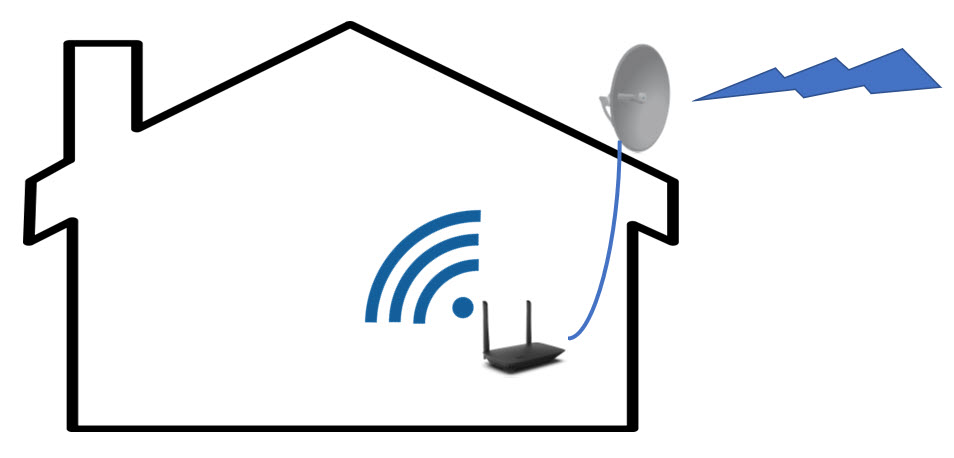
LCWA is Membership-Based and Non-Profit
The other major difference is that we are a membership-based, mostly volunteer-supported network—and we do not operate for profit.
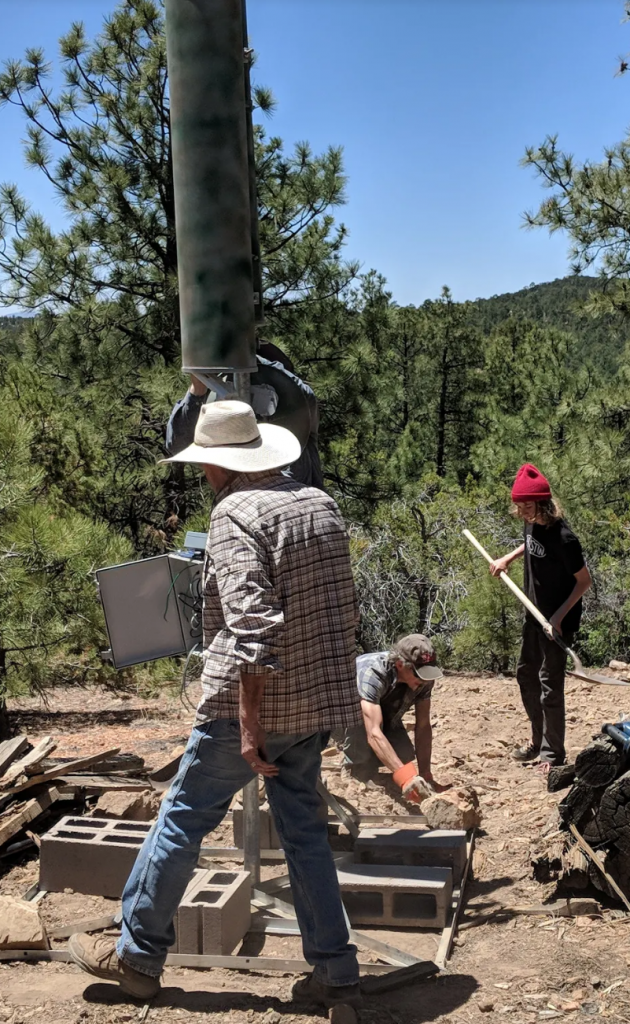
Why Is LCWA Here?
Rural New Mexico is one of the least-populated regions of the United States. Because there are so few people per square mile, the for-profit cable-based internet providers will not lay cable to far-flung residents. Why would they? They cannot make money.
Enter LCWA. We are not here to make money, rather we are here to provide a much-needed service. The people who run and volunteer in LCWA are the same people LCWA provides internet for—its members. We are people who have decided to live in the beauty and magic of rural New Mexico and who also want good internet access. We are serving ourselves and our community of neighbors.
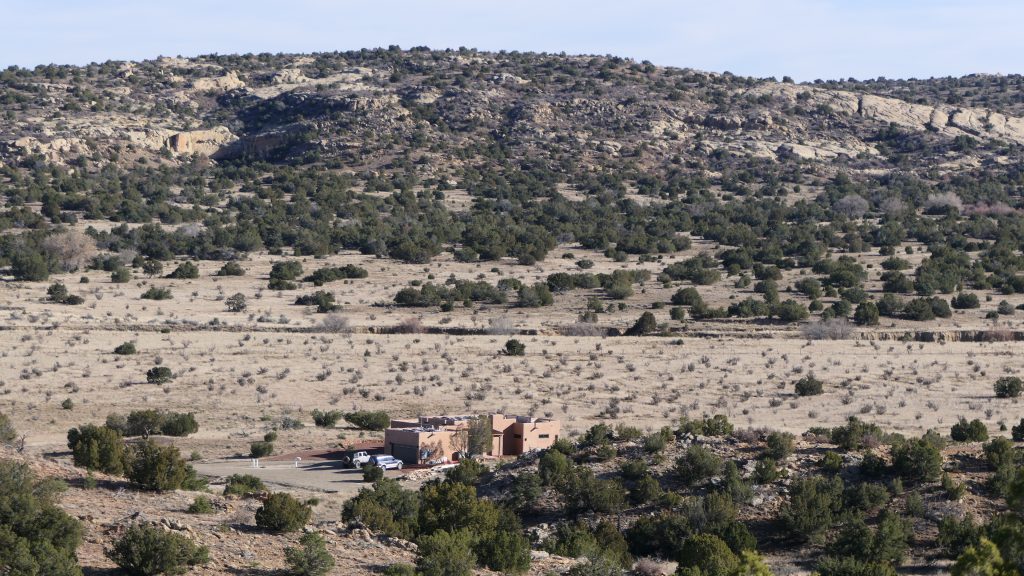
You might call it a case of enlightened self-interest: to provide high-quality internet access to some of Santa Fe County’s most remote locations where we also live.
Your Internet Radio
And it’s the use of data-radios, like the ones LCWA uses, that makes this possible. We can beam signals relatively long distances at a relatively low cost (compared to laying cable), and still deliver very good internet speeds (up to 50 Mbps). Using radios allows us to succeed at our mission.
To receive those data signals, every member of LCWA has a data radio installed either on their rooftop or on the side of their house. This looks a bit like a satellite dish.

When you join, our volunteers (or contractors you pay) help you install that radio on your house and hook it up to the inside of your house to provide internet.
Access Points
Upstream from there, your internet radio points to, and communicates with, one of our 110 central data radio access point radios (called AP’s) that we have spread around much of rural Santa Fe County, and those AP’s connect to our main internet feeds.
Some of those APs are on dedicated towers like the one below.
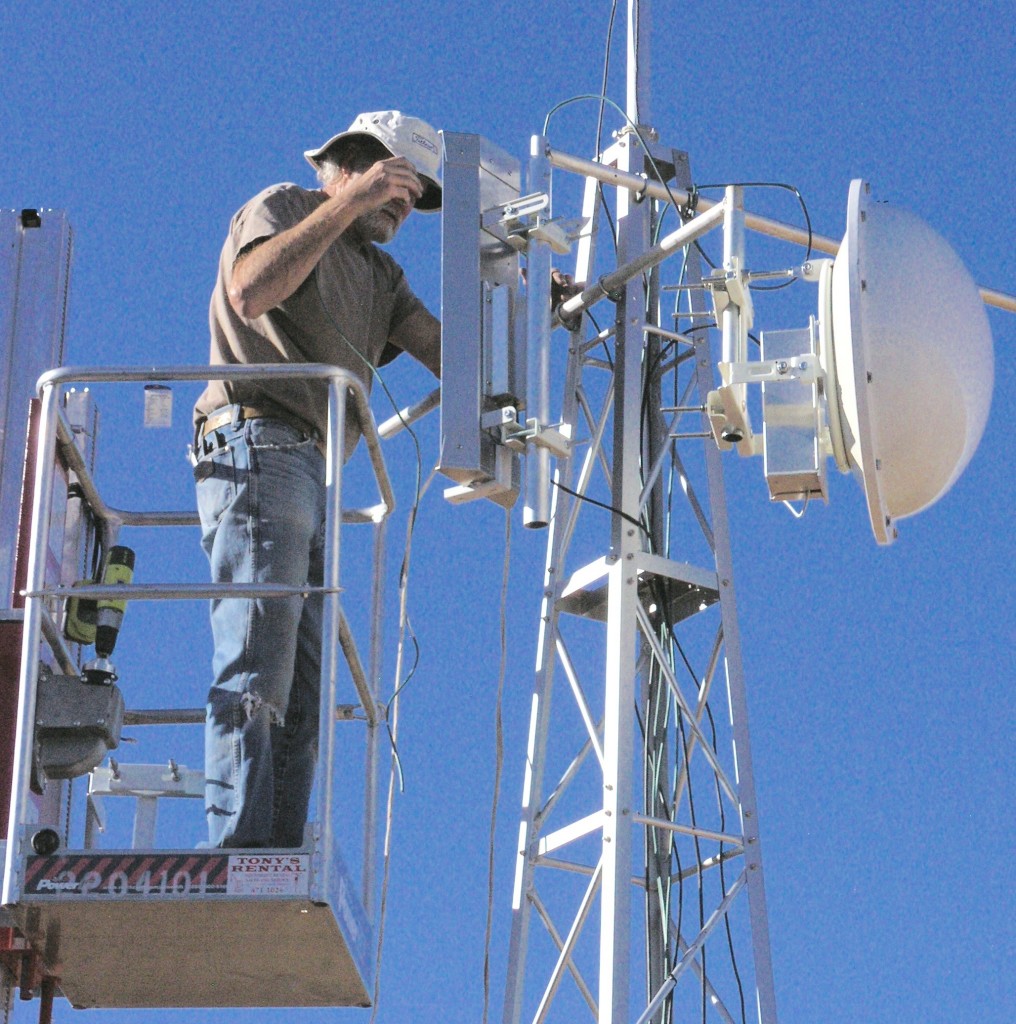
Most of those APs though are simply on the roof tops of members who are volunteering their home’s roof for that purpose.
This creates a spider-web-like distribution pattern for the entire service area, as shown below.
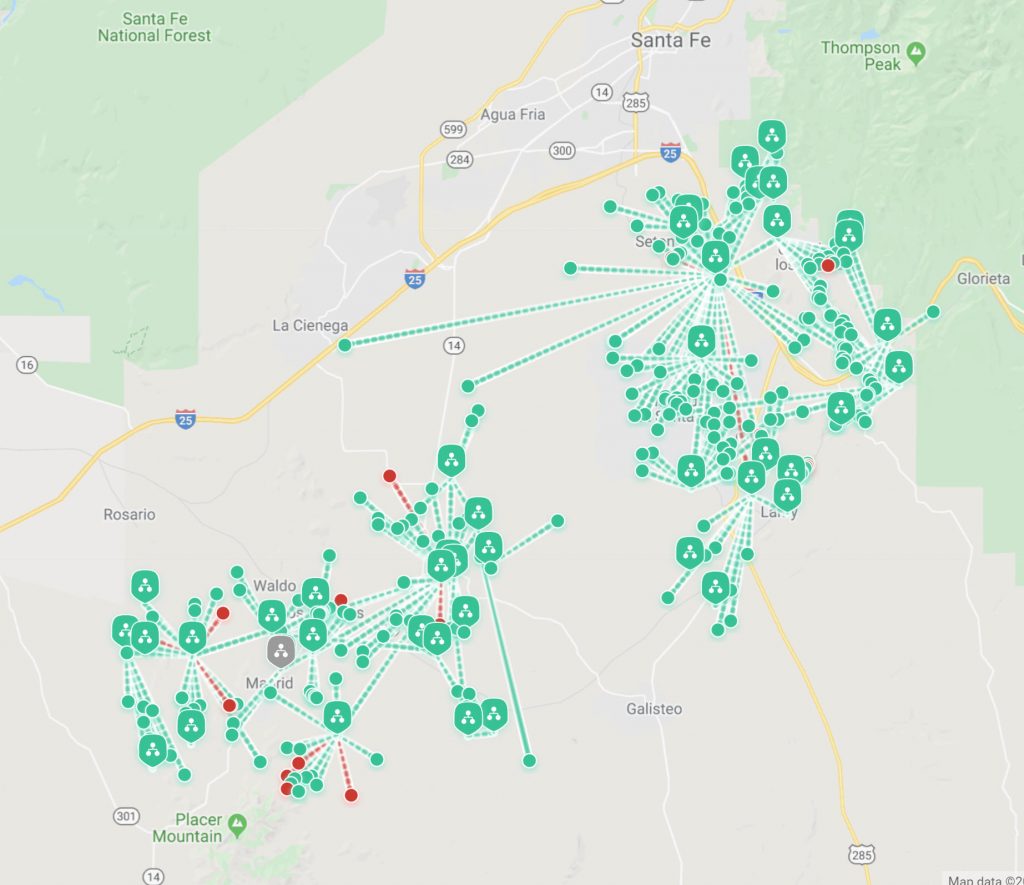
Can We Reach You?
However, LCWA cannot cover ALL of Santa Fe County.
As our coverage map below shows, relative to Santa Fe we focus only on those areas south, southwest, and southeast of the main metropolitan area. And even in those coverage areas, there are gaps.
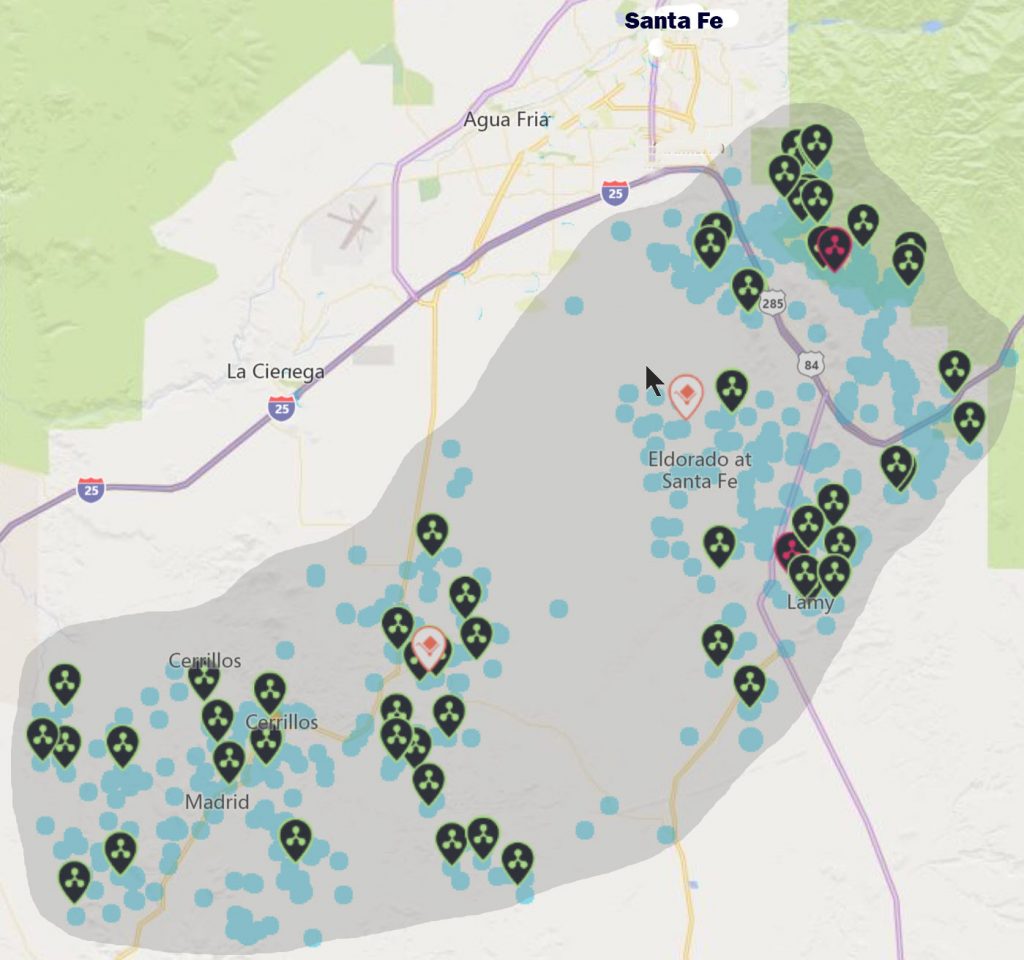
Why Not the Entire County? Why gaps?
For someone to be eligible for LCWA internet access, your house must have a clear line of sight to one of those 110 access point radios, and your home must be within a reasonable distance of the radio. Given the hilly nature of much or rural Santa Fe County and its great expanses, we cannot serve the entire county. Plus, we don’t have volunteers in the whole county.
Checking Your Access
Because we can’t reach everyone, the first thing we do when a prospective new member completes our new member form asking for service is this: we use simulation software to determine if one of our AP’s can reach your address with a clear line-of-sight signal.
We also check to see if the location is within our volunteer support area—if locations are too far a drive from where our core volunteers live, we won’t cover the area.
And finally, even though we could cover metropolitan Santa Fe, we have chosen not to. There are too many good alternate internet choices that families have access to, and so it does not meet the mission to serve hard-to-reach areas.
So the map above is where we serve, but it’s only approximate. Be sure to fill out our new member form to see if your home can be reached by our service.
Pros and Cons of This Approach
Here are the pros and cons of this radio-based, mostly volunteer supported, approach compared to a more traditional, cable-based, for-profit internet company:
Pros
- We provide widespread coverage for a large percent of those in the county who normally would not get internet. In fact, we cover over 400 square miles of rural area and have over 800 member families.
- Due to the relatively low infrastructure costs of a radio network (and due to our mostly volunteer staff and non-profit status), our prices are quite reasonable given how distant spots we cover are.
- While we don’t guarantee an uptime service level, to date our uptime has been excellent.
- While some of our members also have access to DSL internet from their phone company, we offer higher speed than most DSL plans can offer.
- Our volunteers do much of the needed infrastructure support work because they enjoy it and because they like helping people. As a result, they are incredibly friendly!
Cons
- Since we use radio technology, it is susceptible to occasional weather-based outages. For example, an unusually heavy snowstorm or an unlucky direct lightning strike at an AP tower can cause temporary outages.
- Since you must purchase a data-radio for your rooftop, members experience somewhat higher initial equipment costs than a typical cable internet install. However, we do not charge equipment leasing fees—you own your equipment—so after some months of use, the total cost is low compared to cable plans.
- Our radios are occasionally subject to outside or inside the house radio interference. This is rare but it can happen. To prevent that, we ask members not to use any 5Ghz radios in their house. Since many store-bought Wi-Fi router models use 5Ghz radios, we ask members to only use the routers we specify, when possible.
- And finally, while this is not really a negative, it is something to keep in mind: all members are considered volunteers, and we may occasionally ask you to volunteer to support our network of members. At a minimum, we ask that you volunteer to fix and maintain your own equipment as best you can. We also ask that you be patient when volunteers are working to help you and others in the membership community—please treat them like family!
Conclusion
So that is how the LCWA network functions. It’s a good rural Santa Fe internet solution with excellent network up time. Our prices are fair, our members are happy, our volunteers have fun, and so it’s a win-win for everyone. If you’d like to look into joining, the next step is to fill out this new member form.
